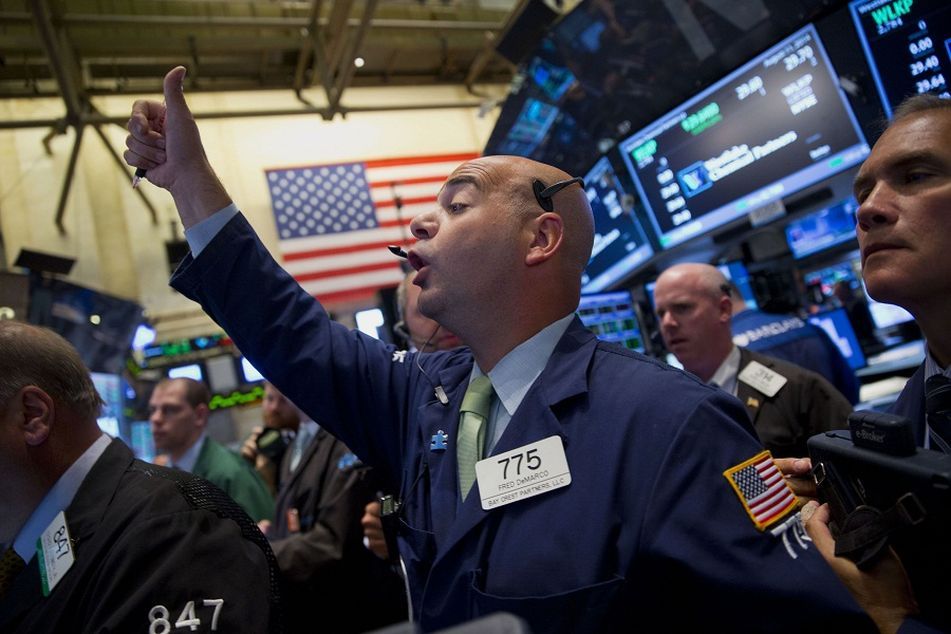It’s getting easier to tell good stocks from bad

2015 is shaping up to be a better year for active equity management.
You didn’t have to be a genius to make money in equities the last two years. Buy an index fund and let the bull market guide you to a 44% gain.
Most money managers who actually pick stocks couldn’t match the S&P 500 Index, let alone beat it. Thanks to three weeks of volatility, that’s beginning to change.
This year, U.S. stocks have started to go their own ways, rather than move in lockstep with each other and with little swings, as they did in 2014. That’s good news for active managers, who’ve seen investors pull money from them for years in favor of low-cost index and exchange-traded funds.
“That’s a better environment for the way that we think of the world,” said Doug Burtnick, a Philadelphia-based senior investment manager at Aberdeen Asset Management, which oversees $525 billion. “Managers who focus on discriminating among companies, and to the extent they tend to get the fundamentals right, should be rewarded more richly.”
Three weeks into 2015, stocks are getting easier to tell apart. The performance gap between the best and worst industries in the S&P 500 are the widest to start a year since 2012. Companies that beat earnings estimates are being rewarded while those that miss are punished. Energy companies with the most debt are falling twice as fast as their peers.
STOCK DISPERSION
A mathematical indicator known as dispersion that measures how far individual equities are swinging relative to the market is up 51% after reaching the lowest level since 1979 in August. Daily moves in the S&P 500 have doubled from a year ago and the index went 15 straight days with peak-to-trough changes of greater than 1%, the longest since 2012.
That contrasts with 2014, when a combination of low volatility and almost unanimous gains in share prices made it the hardest year in three decades for money managers to win.
“This is the year to separate the wheat from the chaff,” Brian Peery, co-portfolio manager at Novato, Calif.,-based Hennessy Advisors Inc., said. The firm oversees $5.9 billion. “When you get these dispersions, people are going to be looking at what the fundamentals look like, how much they are growing revenue, how much are they increasing margins or profits. At the end of the day, that’s what the market should react on.”
Monthly dispersion among S&P 500 stock returns, measured with standard deviation, or variance from the average, narrowed for a fifth year in 2014 and reached 4.1% in August, data compiled by JPMorgan Chase & Co. and Bloomberg show. The measure is 6.2% so far this month.
Energy producers with the most debt are being penalized as oil’s plunge raised speculation that some will find it hard to stay profitable and keep up with borrowings. The 10 oil producers with the highest debt-to-asset ratios in the S&P 500, such as Nabors Industries Ltd. and Transocean Ltd., fell an average 21% in the past three months, compared with the 9.8% loss from those with the lowest.
“The differentiation in returns reflects how investors are reacting to this decline in oil,” Marshall Front, chief investment officer at Front Barnett Associates in Chicago, said. His firm manages over $800 million. “If you’re looking at individual securities as opposed to industries, long-term earnings growth is likely to be the driver.”
TRAILING BENCHMARKS
The S&P 500 rose 1.6% last week, joining a global equity rally after European Central Bank President Mario Draghi expanded stimulus to combat slowing growth and the threat of deflation. The index is down 0.3% in 2015, after jumping more than 10% in each of the previous three years.
In 2014, investors pulled money out of mutual funds, where the challenge to find bigger gains in a monolithic market contributed to the industry’s worst year in at least a decade. Among equity funds with at least $500 million, about 73% trailed their benchmarks, the most since 2004, data compiled by Bloomberg show.
ETFs, which invest in a basket of shares without regard to the individual companies, have seen their popularity rise amid uninterrupted equity gains. Investors poured $140 billion into the securities last year while withdrawing $55 billion from mutual funds, data compiled by Bloomberg and the Investment Company Institute show.
The dominance of ETFs and the increased influence from central banks caused stocks to move in unison last year, according to Dubravko Lakos-Bujas, head of U.S. equity and quantitative strategy at JPMorgan in New York. Three rounds of monetary easing from the Federal Reserve lifted almost every stock, fueling the bull market that has tripled in prices in almost six years.
As the Fed prepares to raise interest rates for the first time since 2006, investors will start to discern winners and losers, he said.
“The gap between elevated levels of correlation and low levels of volatility resulted in a very unfavorable environment,” Mr. Lakos-Bujas said. “Dispersion may pick up on the back of higher volatility levels in 2015 and it should open up the opportunity set for stock pickers.”
Learn more about reprints and licensing for this article.








